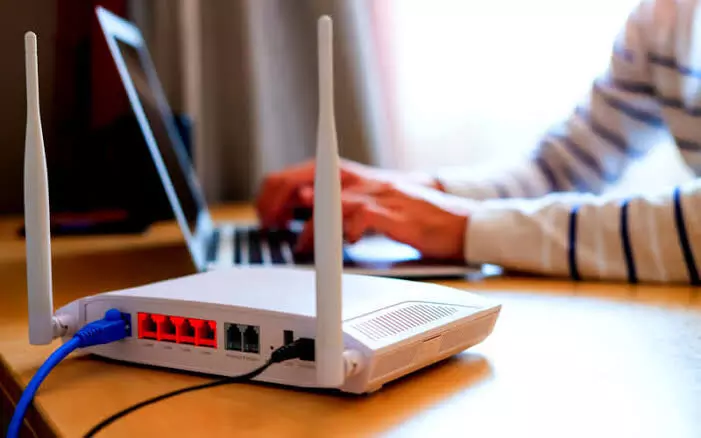Survey: 62% of broadband users face disruptions or slower internet speeds than promised
Top ISPs in India include Reliance-backed Hathway, ACT Fibernet, Excitel and Tikona
By Kedar Nadella
Representational Image.
Hyderabad: Despite the reported growth in infrastructure, the quality of internet connectivity remains a concern of many fixed-line internet users, along with responsiveness to complaints about connectivity disruptions.
According to a survey done by LocalCircles, as much as 62 per cent of respondents using fiber/broadband/DSL/fixed line said they are struggling with either connection disruption issues or receiving lower speeds than what they are paying for.
When it comes to having their complaints resolved, many respondents, as much as 51 per cent of the respondents, said that it takes their service provider more than 24 hours to resolve their complaints.
Broadband services in India
The total number of broadband subscribers in India grew slightly in December 2024, reaching 944.96 million from 944.76 million in November same year, according to the Ministry of Communications.
However, the digitalisation boom appears to be sliding, leading the Telecom Regulatory Authority of India (TRAI) to recommend capping broadband connectivity rates for public data offices (PDO). PDOs are essentially businesses that purchase internet bandwidth and then sell it to multiple customers.
Top ISPs in India include Reliance-backed Hathway, ACT Fibernet, Excitel and Tikona, who are fighting for a share of some 300 million addressable homes for the home broadband market in India.
Industry think tank Broadband India Forum had last year urged the government to consider reducing the statutory fees and GST exemption on service revenues for fibre connectivity and W-Fi broadband deployments to help the industry scale up to meet rising demands.
How do people use internet at home?
According to the LocalCircles survey, when asked, ‘How do you primarily connect to the internet from your home?’ 87 per cent (26,502 respondents) said that they use their fiber/broadband/DSL/fixed line connection.
Only 6 per cent said that they use internet connection devices or dongle from mobile service providers, and another 6 per cent said they use a hotspot via 3G/4G/5G mobile connection.
To sum up, over 8 out of 10 consumers surveyed who have a fiber/broadband/DSL/fixed line connection at home connect to internet using that.
Even though there is a lot of penetration of internet among home connections in India, the quality of the connection is still open for debate.
According to the survey, 62 per cent of fiber/broadband/DSL/fixed line users among the respondents struggle with either connection disruption issues or lower speed received than promised/paying for. As much as 32 per cent stated that they face frequent disruptions; 30 per cent stated that speed received is much lower than what they are paying for; and 3 per cent of respondents stated that they feel their router is being used by someone else as random websites open when trying to access internet.’
How is mobile internet usage in India?
Over 55 per cent of the population was reported to be accessing the internet via mobile broadband. Fixed Wireless Service (FWA) data usage was reported to be 16 times greater than that of mobile data, which was pegged at around 30 GB per subscriber per month. Ericsson estimates that 5G-powered FWA will rise sharply in India, reaching 85-100 million homes by 2030.
Issues in connectivity
In line with the number of homes that use the internet, as much as 37 per cent of fiber/broadband/DSL/fixed line users say they have three or more issues every month with their connection.
As much as 12 per cent stated that they have issues ‘more than 10 times’ in a month. However, 23 per cent of respondents stated they ‘do not face any issues.’
How long does it take to resolve internet connectivity issues?
On the other side, getting their problems solved also has hurdles. According to the survey, 51 per cent of fiber/broadband/DSL/fixed line users said when they raise a complaint, it takes the service provider more than 24 hours to resolve the issue.
As much as 43 per cent of respondents stated that the issue is resolved within 24 hours. However, 2 per cent of respondents stated that the operator never resolves their issues. Social media platforms like X are full of complaints about delayed resolution by operators. Five per cent of respondents stated that they haven’t had any complaints in the last year.’
How many are willing to change their internet service provider?
Going by the number of connectivity issues that home broadband internet users are facing and how frequently they are facing them, it is not surprising to see that as much as 66 per cent of fiber/broadband/dsl/fixed line users said they are willing to switch to an alternate provider for better quality, service or pricing.
When a product or service is found to be unsatisfactory, consumers tend to switch to another choice if available, which is very much the case in the telecom sector.
Out of 26,883 consumers, 24 per cent stated that they would switch for better connection quality and uptime; 18 per cent stated that a lower monthly price for similar speed/quota connection could be a factor; and 22 per cent are willing to switch if they get higher speed/quota for similar monthly price.
Survey demographics
Through a comprehensive national survey, LocalCircles said that it has strived to find out how consumers connect to the internet at home and what issues they face in getting proper connectivity.
The study received over 1,40,000 responses from fixed line internet users located in 333 districts of India; 62 per cent respondents were men while 38 per cent respondents were women; 47 per cent respondents were from tier 1, 24 per cent from tier 2 and 29 per cent respondents were from tier 3 and 4 districts.